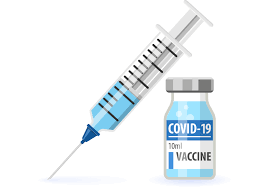 In this issue of JAMA Cardiology, Johansen and colleagues1 report findings from a prespecified secondary analysis of the DANFLU-2 pragmatic randomized clinical trial2 comparing the efficacy of standard- and high-dose (HD) inactivated influenza vaccine. Because of its enormous statistical power and the application of methods that only until recently were technically impracticable, this trial deserves consideration in a broader context than the specific comparison of the effects of 2 vaccine dosages on a specific virus. I hope this study points the way toward a future in which we have much more robust evidence to evaluate vaccines and other therapies intended for broad segments of the population. [JAMA]
In this issue of JAMA Cardiology, Johansen and colleagues1 report findings from a prespecified secondary analysis of the DANFLU-2 pragmatic randomized clinical trial2 comparing the efficacy of standard- and high-dose (HD) inactivated influenza vaccine. Because of its enormous statistical power and the application of methods that only until recently were technically impracticable, this trial deserves consideration in a broader context than the specific comparison of the effects of 2 vaccine dosages on a specific virus. I hope this study points the way toward a future in which we have much more robust evidence to evaluate vaccines and other therapies intended for broad segments of the population. [JAMA]
The trial’s main finding is that there was no significant difference in the primary clinical outcome of hospitalization for influenza or pneumonia between the HD and standard-dose influenza vaccinations. However, a small difference was observed in rates of cardiovascular events that favored the HD vaccine. The question of how to parse these findings depends on fundamental clinical and statistical factors that frequently cause controversies in trial interpretation.
The clinical and public health question addressed here by Johansen et al is a secondary hypothesis. According to the DANFLU-2 trial’s statistical analysis plan, a hierarchical statistical analysis was prescribed, in which secondary hypotheses could not be formally tested if the primary end point did not meet the prespecified criteria for significance.
A purist could assert that given the lack of significant difference observed for the primary end point, any further analyses would be descriptive and hypothesis generating. However, others might argue that it is reasonable to consider circumstances and prior knowledge and allocate further statistical weight to secondary outcomes of interest. All of this evokes the well-known colloquialism “to P or not to P” discussed in detail by the American Statistical Association.3 In this case, the JAMA Cardiology editorial staff and reviewers chose “not to P,” so the article reports point estimates and confidence intervals for outcomes of interest.
An additional issue is the small magnitude of the estimated benefit. Another pithy colloquialism pertains here: “A difference, to be a difference, must make a difference.” If one accepts that trial results are a good predictor of what will happen in practice, the differences are on the order of 762 people vaccinated with the HD formulation to prevent 1 cardiorespiratory hospital admission.
At the core of this argument is the minimally important clinical or public health difference: how many adverse outcomes per unit of population would need to be prevented to cause a change in practice? The authors point out that given the universal issue of influenza vaccine, use of the HD version could prevent 1 million hospitalizations per year. In a practical sense, I see this result as tipping the balance, given the prior data—influenza vaccination per se has been shown to reduce cardiopulmonary hospitalizations. The HD version confers a small but measurable benefit and yields a more robust immune response against the virus. On the other hand, the differences are small enough that they are unlikely to drive required changes in public health practice if the costs are significantly higher than the standard-dose version.
More>
###
